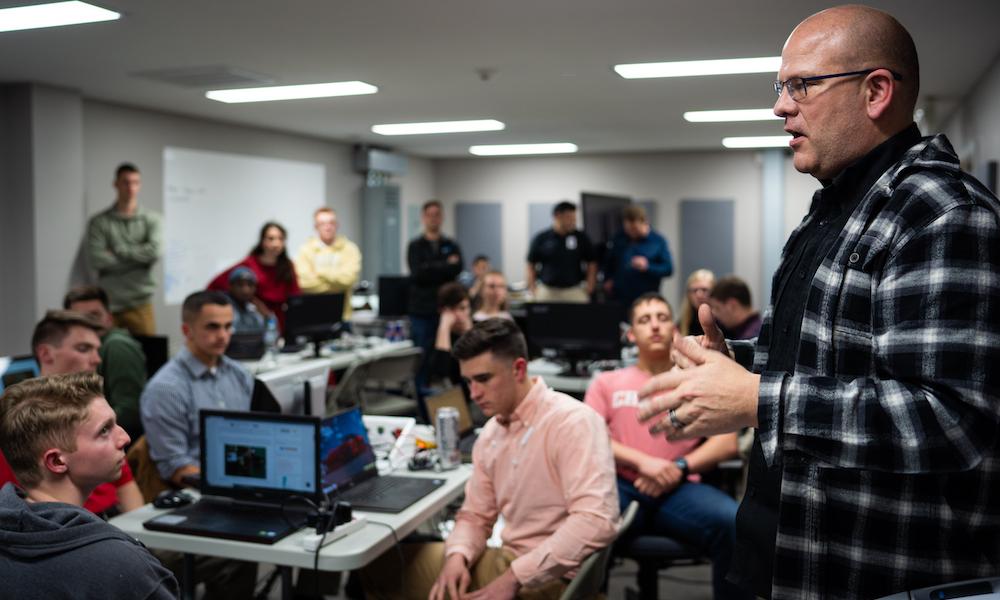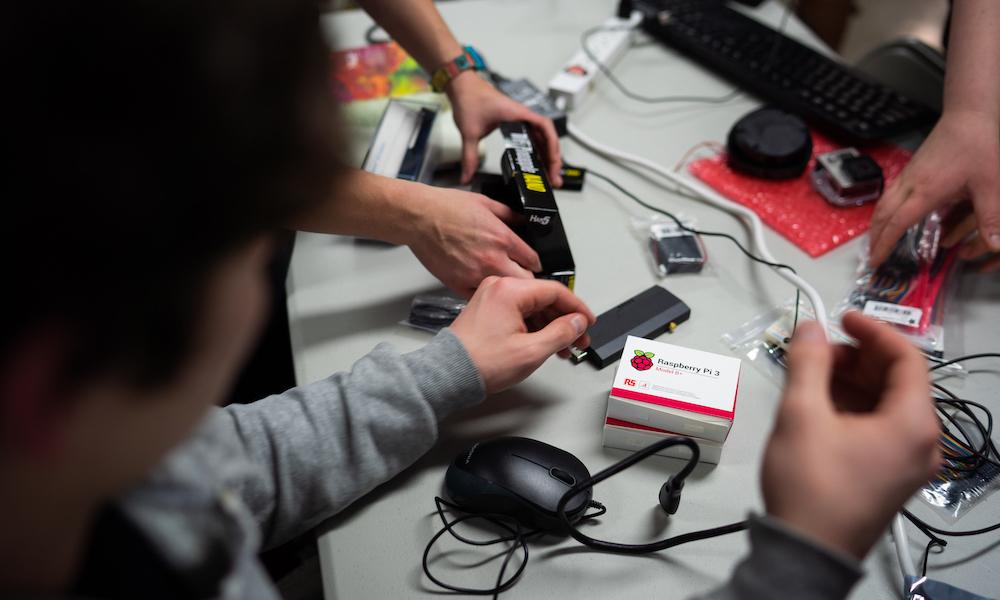Intelligence hackathon
JMU X-Labs partners with defense contractor for student competition
Science and TechnologySUMMARY: Student teams from JMU and Virginia Military Institute were given 24 hours to create a surveillance prototype that could count the number of people walking past a designated area, but with a catch—their devices needed to be accurate enough to avoid counting the same person twice.
Because of its classified nature, the U.S. intelligence community faces a challenge recruiting undergraduates with both technical expertise and security clearance.
To fulfill this need, Cameron Hunt, the CEO of a defense contractor in North Carolina, reached out to JMU X-Labs—a program known for developing partnerships that align higher education with industry needs.
Hunt worked with JMU X-Labs Director Nick Swayne and Fred Briggs, an instructor of the program’s Drones class, to develop a 24-hour competition that tested students’ creative and technical skills and provided an opportunity for paid summer internships.
 |
| Cameron Hunt explains the challenge to students from JMU and VMI. |
The JMU X-Labs team invited students from several of their transdisciplinary classes, including Internet of Things, Drones and Autonomous Vehicles. Swayne also contacted Addison Hagan from the Virginia Military Institute Foundation, who coordinated with the institute’s Department of Engineering and administrators to get approval for VMI student participation.
Alexandra Treml, a junior studying integrated science and technology and a member of the JMU Honors College, jumped at the opportunity. She and her interdisciplinary team are developing a drone prototype with a multispectral camera to help researchers determine which flowers best support bee populations.
“I felt confident enough to sign up because of the class work I had already been doing with robotics, problem-solving and programming,” Treml said.
Twelve JMU students spent the first day of their spring break developing functional devices in just 24 hours. Using a Raspberry Pi—a single-board computer—along with cameras and sensors, students from both universities were tasked with creating a prototype that could count the number of people walking past a designated area, but with a catch—their devices needed to be accurate enough to avoid counting the same person twice.
 |
The students were briefed on the problem prior to the competition, but that didn’t necessarily make it any easier.
|
"I felt confident enough to sign up because of the class work I had already been doing with robotics, problem-solving and programming." — Alexandra Treml, junior, integrated science and technology |
“My group and I met to work on strategies and a plan to tackle the scenario before the event,” Cecilia Clark, a sophomore majoring in intelligence analysis, said. “When we got there, though, we ran across problems and brainstormed new ideas, which almost completely changed our finished product from the original idea.”
The top team from JMU placed third overall and sponsors of the competition were pleased with the students’ skills and abilities.
“The event was very successful,” Hunt said. “It helped my client understand just how powerful these kinds of events can be, and they are interested in seeing which students are willing to do on-site summer internships. I expect that my client will be interested in exploring ways to make this kind of event a cornerstone of their tech talent recruitment pipeline.”


